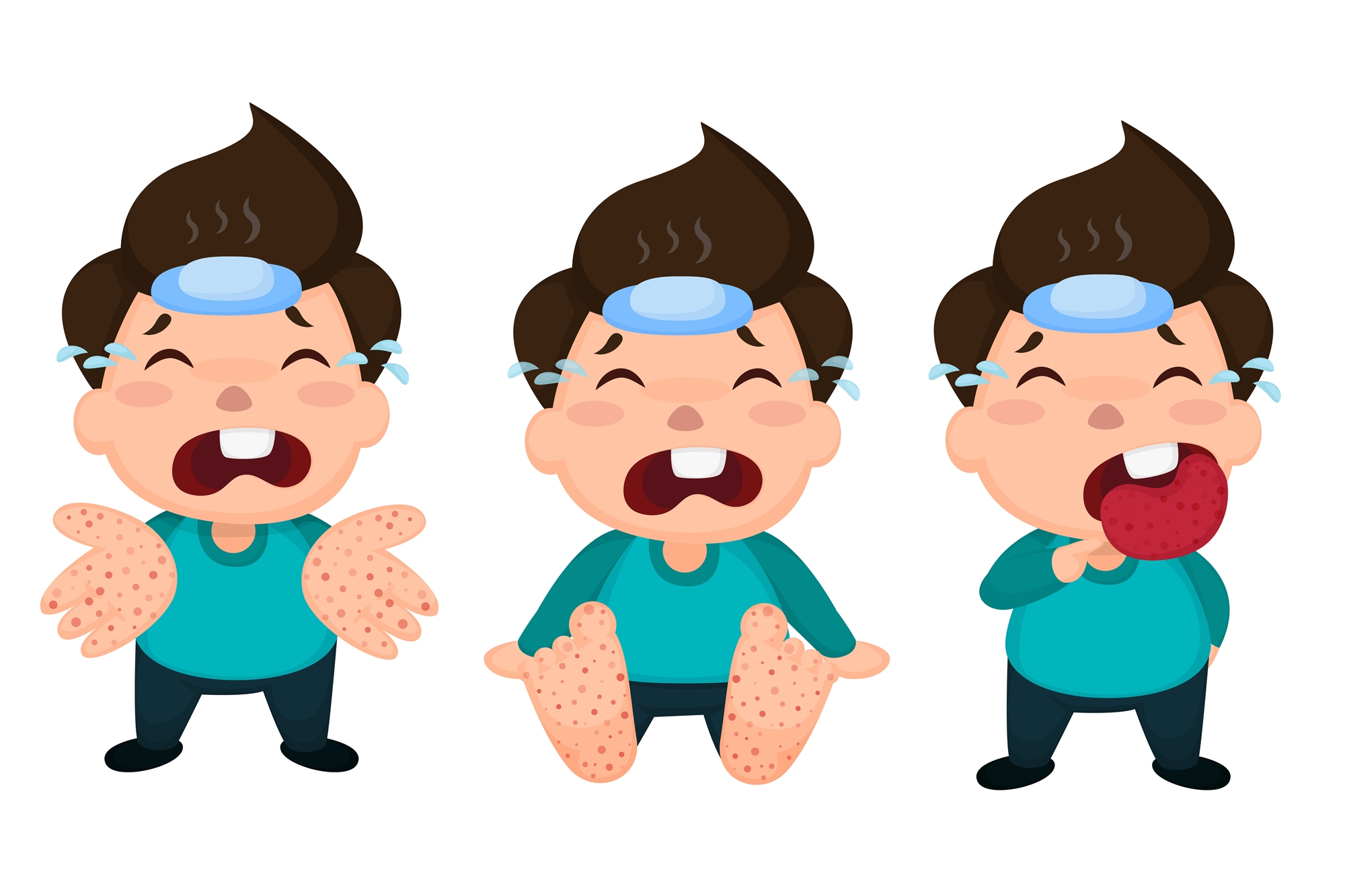Etiology
Enteroviruses are made of small viruses like ribonucleic acid (RNA) and protein. Enteroviruses includes polioviruses, coxsackieviruses, echoviruses, and other enteroviruses. In addition to the three subtype of polioviruses, there are 62 non-polio enteroviruses causing diseases in humans: 23 Coxsackie A viruses, 6 Coxsackie B viruses, 28 echoviruses, and 5 other enteroviruses.
Transmission
Enterovirus spread through fecal-oral route or oral-oral route. Enteroviruses can be found in the respiratory secretions like saliva, sputum, or nasal mucus; and stool of an infected person. A person can be infected if he or she has direct contact of secretions of an infected person or any contaminated surfaces and objects like drinking glasses or telephones. Parents, teachers, and child care center workers are likely to be infected by changing diapers for infected infants.
Clinical Manifestations
Enterovirus are the most common cause of aseptic meningitis and can cause serious disease especially in infants and the immunocompromised."Human enteroviruses ( family Picornaviridae ) infect millions of people worldwide each year, resulting in a wide range of clinical outcomes ranging from unapparent infection to mild respiratory illness ( common cold ), hand, foot and mouth disease, acute hemorrhagic conjunctivitis, aseptic meningitis, myocarditis, severe neonatal sepsis-like disease, and acute flaccid paralysis.
Treatment
There is no vaccine or antiviral agent known to be effective in treating or preventing EV71 infection. Experimental vaccines and antiviral agents are being worked on. Enterovirus-induced myocarditis has been successfully treated with interferon-α.
Prevention
No vaccine is currently available for the non-polio enteroviruses. Because most persons who are infected with enteroviruses do not become sick, it can be difficult to prevent the spread of the virus. General cleanliness and frequent handwashing are probably effective in reducing the spread of these viruses. Also, cleaning contaminated surfaces and soiled articles first with soap and water, and then disinfecting them with a dilute solution of chlorine-containing bleach ( made by mixing approximately ¼ cup of bleach with 1 gallon of water ) can be a very effective way to inactivate the virus, especially in institutional settings such as child care centers.


